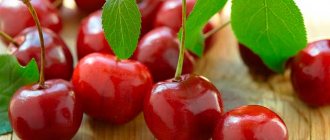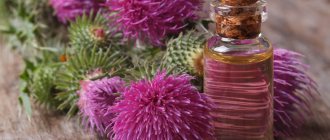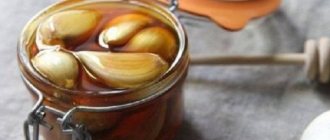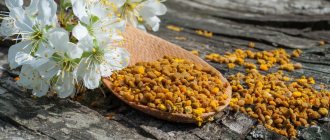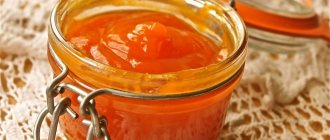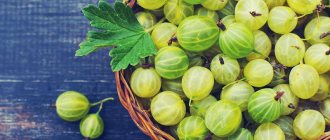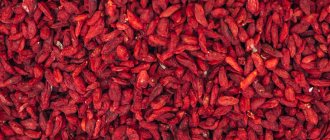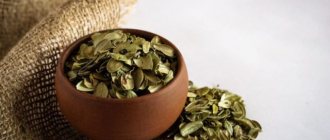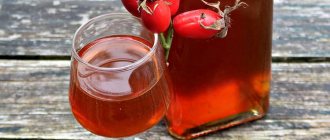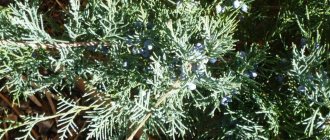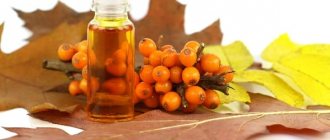Goji berries are incredibly popular among people who want to lose weight and improve their health. Another name for the product is wolfberry or wolfberry . Goji belongs to the Solanaceae family. The berry is actively used to create various supplements and food products aimed at speeding up metabolism and maintaining overall health.
In Chinese, "gouqi" translates to "dereza." That is why in Russia the berry is called Goji. This is how many people translate the word “dereza” from Chinese dialects.
What are goji berries
Goji berries are the fruit of the wolfberry (Berber wolfberry), a creeping subshrub that grows in Asia. The largest plantations are located in China and Tibet. For medicinal purposes, wolfberry is grown in Russia and some European countries. The plant is short, has brown, rough bark and long branches with thorns. The shrub blooms in June-August, the flowers are small. The berries ripen from July to October. They have a rich red color, oval shape and sizes from 5 to 15 mm, which can be seen in the photo. There are small seeds inside.
Ripe fruits have a pronounced sour or sweet-salty tart taste. Calorie content – 309 Kcal per 100 g.
Other variations of the name of goji berries: Lycium barbarum, Goji berries and the common one - Tibetan barberry, which the fruits received due to their external resemblance to this plant. From the point of view of botanists, this name is incorrect, since wolfberry and barberry belong to different genera and families.
There are also black goji berries, which grow only on wild bushes in the mountainous regions of Tibet and appear smaller. Scientific evidence confirms that they contain more nutrients than red fruits. Due to difficulties in procurement and transportation, black berries are not very common on the European market.
Sunfood, Sun Dried Goji Berries, 8 oz (227 g)
★★★★☆
1 154 ₽
Buy at a discount
Chemical composition
The healing properties of goji berries are due to a unique combination of active components that mutually enhance each other's effects.
The composition of wolfberry fruits includes the following substances:
- Amino acids. Berries contain 19 different amino acids, 8 of which are important for the body.
- Polysaccharides. Rare compounds that bind to cell receptors provide antioxidant effects.
- Vitamins. The concentration of ascorbic acid is 500 times higher than in citrus fruits. Goji berries also contain all B vitamins, vitamin E and beta-carotene.
- Microelements. It contains a large amount of iron; in moderate concentrations there is calcium, magnesium, phosphorus and other minerals. The fruits also contain very high levels of germanium, a compound that has antitumor properties.
- Fatty acid. Omega-3, -6, -9 are in the optimal ratio, which is necessary to normalize the blood lipid profile and accelerate weight loss.
- Plant fiber.
The benefits and harms of goji berries for the body
Beneficial properties of goji berries Goji is actively advertised as a superfood, that is, a product containing a record amount of antioxidants, important fatty acids, and essential amino acids. It is believed that regular consumption of fruits, including as part of a healthy alkaline diet, leads to improved physical condition, increased muscle strength, and increased endurance. According to marketers, they protect people from a variety of diseases, including cancer.
However, claims of “superpowers” are refuted by nutritionists and scientists. According to nutritionists from the Institute at the University of Granada, eating wolfberries is as beneficial as all other edible fruits. Even if unusual positive changes are observed, they, according to the Spaniards, are associated exclusively with self-hypnosis (placebo effect).
There is no convincing scientific evidence that goji, due to its high antioxidant content, protects cells from free radicals and oxidative stress. At the same time, the results of some studies indicate the high antioxidant activity of the aqueous extract.
The assumption about the presence of the anticholinergic blocker hyoscyamine in fruits was put forward only in a work in 1890, and since then has not been confirmed by anyone. Current pharmacological studies refute this.
Scientists have proven certain beneficial properties:
- Wolfberry extract reduces the loss of retinal ganglion cells in glaucoma and is considered a potential neuroprotective candidate with corresponding effects.
- Polysaccharides improve immune defense by activating T-lymphocytes, which fight viruses and cancer cells. They have almost the same chemical structure as the immune-boosting substances of Echinacea, Rudbeckia or Grifola curly.
Echinacea is a well-known drug used during periods of high likelihood of developing ARVI. Grifola is prescribed for the prevention of cancer and during chemotherapy to mitigate side effects. However, there are no convincing results of laboratory and clinical studies proving the anticancer effect of goji.
Other purported benefits The berries supply the body with vitamins (A in the form of beta-carotene, B, C, E) and trace elements, including germanium, which is now rarely found in staple foods because crops are grown in depleted soils. One hundred grams of the product satisfies more than half of men’s daily requirement for iron, which is 10 mg.
Goji polysaccharides are a source of energy for beneficial intestinal bacteria. Eating fruits helps restore intestinal flora and cleanse the body, as it accelerates the elimination of metabolic waste.
Since polysaccharides increase muscle performance, berries are recommended for athletes. They help remove lactic acid that forms during exercise. At the same time, glycogen accumulates and oxidative stress decreases.
Potassium, secondary plant substances sesquiterpenes, amino acids l-arginine and l-glutamine stimulate the production of human growth hormones in the pituitary gland, which are necessary not only for children. They promote muscle growth and increase resistance to stress, which is why goji is called an adaptogen.
The fruits have anti-inflammatory properties and are supposedly useful for autoimmune diseases: Crohn's disease, systemic lupus erythematosus. Anticosidants zeaxanthin and lutein prevent age-related degeneration of the macula (the center of the retina).
Chinese Traditional Medicine Goji has been used for thousands of years in Traditional Chinese Medicine (TCM) for a wide variety of health problems:
- hypertension,
- high blood sugar levels,
- deterioration of vision and eye diseases,
- decreased immunity,
- asthma,
- allergies,
- painful conditions.
The Chinese are sure that berries save you from cancer and increase your Yin level with their help. Dried fruits are mainly used in the form of wine infusions and decoctions. One dose is 6–15 g.
When it is appropriate to indicate a deficiency of Liver and Kidney Yin:
- confusion,
- diabetes,
- anemia,
- colds,
- nocturnal hyperhidrosis,
- impotence,
- severe fatigue,
- premature aging,
- weakness in the back and knees,
- dizziness,
- noise in ears,
- blurred vision,
- infertility.
Harmful properties and contraindications of goji berries The fruits of wolfberry are considered non-poisonous; cases of human poisoning are unknown. According to the German Federal Institute for Risk Assessment, there is no indication of any harmful effects of goji when consumed in normal quantities. However, due to the high sensitizing potential, there is a risk of a cross-allergic reaction.
Interaction with drugs is also possible, since the components of the berries react with cytochrome, thus affecting metabolism in the liver. Based on descriptions of clinical cases, it was concluded that the consumption of fruits is inadmissible when using medications that reduce blood clotting, for example, phenprocoumon, marcumar or warfarin.
When taken simultaneously, the effect of thinners is enhanced and the risk of bleeding increases.
Beneficial features
The fruits of Chinese wolfberry have a number of pharmacological effects:
- increase the speed of metabolic reactions, promote calorie burning;
- increase immunity - stimulate the production of immunoglobulins, normalize the leukocyte formula of the blood;
- support the cardiovascular system - stabilize blood pressure, improve trophism and blood supply to the myocardium, strengthen the walls of blood vessels;
- improve skin condition - the benefits of goji berries include a rejuvenating effect, protecting the epidermis from photoaging;
- normalize glucose levels, reduce the amount of cholesterol in the blood;
- have a positive effect on the gastrointestinal tract - protect the liver from toxic damage, maintain healthy intestinal microflora;
- reduce the risk of developing tumor diseases.
Do goji berries help you lose weight, watch this video:
Goji berries. Is it possible to lose weight with Goji berries. Elena Chudinova
For the female body
The healing properties of goji fruits include eliminating pain during menstruation, maintaining reproductive function, and normalizing the production of sex hormones. Berries also improve your psycho-emotional state and help cope with depression and sudden mood swings during PMS.
In women during menopause, berries relieve unwanted manifestations of menopausal syndrome and protect against uterine and ovarian cancer.
For the male body
In men, goji berries affect sexual function: they improve sperm quality and increase the number of active sperm, normalize libido, and enhance sensations during sexual intercourse.
The herbal product also affects the functioning of the adrenal glands and testicles, and stimulates the synthesis of testosterone. Goji berries are very useful for athletes and people involved in intense physical labor, as the fruits saturate the body with energy and increase endurance.
Goji berries (wolfberry). What is it and where do they grow?
Goji is an evergreen shrub from the Solanaceae family that is native to Tibet. The leaves of the bush are gray-green. Its flowering begins in June and continues until October. Beautiful pink and purple flowers have a pleasant smell.
The berries of the common wolfberry are oblong in shape and orange, purplish-red in color. The plant begins to bear fruit in May and continues until October.
In their raw form, goji berries are considered poisonous due to the alkaloids they contain. But in dried form, they can be used for medicinal purposes, since the alkaloids are lost during the drying process.
You can dry wolfberry only naturally in the shade. The berries are considered dried when the skin begins to peel off the pulp. The taste of dried berries is sweet and sour.
fresh fruits are contraindicated for use due to their toxicity
Unique properties
The properties of goji are quite wide and can be used for the treatment and prevention of many diseases:
- Goji berries are called the “elixir of youth”, as they have antioxidant properties and prevent aging;
- normalize blood pressure;
- the fruit contains a substance (beta-sitosterol), which can reduce cholesterol in the blood;
- wolfberry is also capable of reducing blood sugar, so it can be used by diabetics;
- help convert nutrients obtained from food into energy, which is necessary when playing sports and for those who want to lose extra pounds;
- can be used for dizziness, migraine, atherosclerosis;
- improve the condition of the cardiovascular system;
- will help improve vision and are used as a preventive measure for eye diseases;
- have a beneficial effect on hormonal levels, increase libido;
- help improve sleep and memory, activate the hormone of youth;
- Due to the germanium contained in the berries, they have antitumor activity, stimulate the growth of new cells, and improve the condition of the body during the rehabilitation period;
- They also have anti-inflammatory activity and are used for diseases of the gastrointestinal tract and kidneys;
- have a beneficial effect on the state of the reproductive system, can be used for infertility in both women and men;
- help with menopause;
- improve blood condition, increase lymphocyte count;
- relieve tension, increase stress resistance, restore emotional balance.
dried goji berries can be purchased ready-made and in good quality
How to choose, where to buy and how to store berries
Berries can be purchased in various convenient forms. In addition to dried berries, there are frozen ones, as well as juices, pastes, jams, extracts in capsules, dietary supplements, and goji oil.
You can buy pastes, jams, and juices in supermarkets; some even have dried berries. But more often the product is found in pharmacies or online stores.
The only disadvantage of an online store is that there is no way to evaluate the quality of the product. This is only possible with personal inspection of the berries.
But what you need to pay attention to:
- first of all, you need to check that the package with berries does not contain foreign elements, spoiled or blackened berries;
- The berries should not stick together to form a lump. When dried properly, the berries crumble and do not stick to each other or the packaging;
- the surface of the berries should be matte and free of plaque;
- The berries have a slightly sweet taste. They should not resemble sweets; if so, then most likely they were boiled in syrup;
- There should be no foreign odor.
If the berries meet all of the above points, then they can be used.
Goji berries should be stored in a dark place, protected from direct sunlight. It is necessary to monitor humidity. In a very humid place, the berries may become moldy. The shelf life is 2 years from the production date indicated on the packaging.
Properly dried fruits contain a large amount of substances beneficial to the body.
Indications for use
Considering the beneficial properties of goji berries, nutritionists recommend their use as a dietary supplement for people with excess body weight. Fruits accelerate weight loss and normalize metabolism.
There are also a number of diseases that are treated with the help of wolfberry fruits:
- cardiovascular pathology – arterial hypertension, atherosclerosis, circulatory failure;
- diseases of the gastrointestinal tract;
- gynecological diseases - algodismenorrhea, chronic inflammation of the uterus and appendages, infertility, ovarian dysfunction;
- male diseases - prostatitis, prostate adenoma, impotence;
- decreased visual acuity, dry conjunctiva;
- neurological problems - insomnia, chronic fatigue syndrome, depression;
- skin diseases - allergic rashes, psoriasis;
- diabetes.
Goji can be used for the prevention and treatment of cancer after permission from a doctor. The berries are also used to reduce the negative effects of chemotherapy.
Dragon Herbs, Goji LBP-40, 500 mg, 100 Capsules
★★★★★
1 830 ₽
Buy at a discount
Contraindications to the use of goji berries
Despite the many beneficial properties of these fruits, they also have some contraindications for use:
- poor blood clotting;
- frequent nosebleeds;
- use of anticoagulants;
- increased body temperature;
- menstruation period;
- inflammatory processes of various localizations;
- pregnancy;
- depression, apathy, stress;
- increased intraocular pressure;
- bleeding in the uterine cavity.
They should not be taken regularly by those who suffer from diabetes mellitus or arterial hypertension, are under medical supervision and are taking appropriate medications to treat these diseases. This is due to the fact that the substances in the berries enter into a chemical reaction with the components of these drugs. Most often, such a combination can cause various side effects, significantly worsening the patient’s condition.
Contraindications
The main limitation to taking the supplement is an allergic reaction to wolfberry fruits or to all red fruits and vegetables. Fresh goji berries have a mild laxative effect, so they should not be taken by patients with gastritis or gastric ulcers in the acute stage.
Pregnancy is not an absolute contraindication to taking the drug; the issue is resolved individually after consultation with a gynecologist. Berries are also not given to children under 3 years of age.
Women during breastfeeding are strictly prohibited from eating fruits, as they change the taste of milk and can provoke allergies in the child.
What You Need to Know Before Adding Goji Berries to Your Diet
Before adding goji berries to your diet, be sure to talk to your doctor. Some companies claim that goji berries have fewer side effects than medications. However, they may interact with a number of prescription medications.
Avoid goji berries if:
- you have low blood sugar
- you are taking anticoagulants (such as warfarin)
- you have high or low blood pressure
- you are breastfeeding or pregnant (there is a possibility of miscarriage)
- you are allergic to fruit
Additionally, be aware that one cup of goji berries contains 340% of your daily value for vitamin A. You may want to limit your intake of this food to reduce the risk of vitamin A toxicity.
Release forms
The herbal supplement is available in different versions:
- Dried goji berries. Natural dried fruits, taken independently or added to other dishes. Vitamin drinks and compotes can be prepared from whole fruits.
- Powder. Crushed dried berries for oral administration. The product is added to porridges and salads, and used to brew healthy teas. The downside is the fine fraction of the powder, which is why it can irritate the mucous membranes of the pharynx and respiratory tract.
- Berry juice. Concentrated liquid extract from the fruits of wolfberry is available in large volume bottles. The solution is taken in the morning, preferably on an empty stomach, dosing it in measuring spoons. The product contains sugar, which gives goji berry juice a pleasant taste. Minus - the juice can cause dyspeptic disorders.
- Extract in capsules. The best release form, which contains a standardized berry extract. Thanks to the protective shell, the capsules do not irritate the stomach and do not cause side effects.
Dereza plant, what kind of shrub is it?
Dereza has been known in China for several thousand years. The plant belongs to the nightshade family. Shrub up to 3.5 m tall. The branches are covered with thin spines, the leaves are simple, entire, elliptical. The flowers are lilac (purple-pink), bell-shaped.
The plant bears fruit, in different regions, from May to September or from July to October. During this time, 13 harvests are collected, of which the most valuable is in August. The fruit is a small coral-red berry known as wolfberry fruit, used in folk medicine.
First of all, this is traditional Chinese medicine. The dried fruits are used to treat wet dreams, lower body pain, dizziness and amblyopia.
Photo: common wolfberry.
In addition to red, the fruits are also black. Outwardly they look like barberry. Therefore, sometimes traders pass off cheap barberry as more expensive goji. But they can always be distinguished by color.
Goji fruits are dark red. And barberry also has five seeds, and goji has many. Fresh fruits of the plant are poisonous. It is not even recommended to take them with bare hands. The skin may turn black. But in dry form they no longer pose a danger. They taste sweet-salty, slightly sour.
Dried goji berries. By the way. in Asian medicine they are used as a general tonic.
TOP 6 goji berry extracts
Such supplements are produced in capsules with a standardized content of active ingredients. The shell is made from plant materials, it protects against irritation of the gastrointestinal mucosa and ensures the most complete release of the extract in the small intestine. Dietary supplements are convenient to take and dose.
TOP 6 capsules with goji fruit extract:
Doctor's Best, Best Goji Berry Extract, 600 mg, 120 Vegetarian Capsules
★★★★☆
746 ₽
Buy at a discount
Paradise Herbs, GoJi, 60 Vegetarian Capsules
★★★★☆
837 ₽
Buy at a discount
Dragon Herbs, Goji LBP-40, 500 mg, 100 Capsules
★★★★★
1 818 ₽
Buy at a discount
Nature's Way, Goji Berry, Standardized Extract, 60 Vegetarian Capsules...
★★★★☆
1 032 ₽
Buy at a discount
Planetary Herbals, Goji Berry, 700 mg, 180 Capsules
★★★★★
1 568 ₽
Buy at a discount
TOP 6 dried berries
The supplements are dried goji berries carefully collected from plants and packaged in sealed packages. The volume of one package is from 100 to 450 g.
Dragon Herbs, Mountain Goji Berry, 8 oz (227 g)
★★★★☆
955 ₽
Buy at a discount
Navitas Organics, Organic Goji Berries, 16 oz. (454 g)
★★★★☆
1 765 ₽
Buy at a discount
Sunfood, Organic, Sun Dried Goji Berries, 1 lb (454 g)
★★★★☆
2 300 ₽
Buy at a discount
Navitas Organics, Organic, Goji Berry Powder, 8 oz. (227 g)
★★★★☆
1 471 ₽
Buy at a discount
Ojio, Organic Goji Berries, Hand Picked, 8 oz (227 g)
★★★★☆
796 ₽
Buy at a discount
LifeTime Vitamins, Life's Basics Goji Juice Blend, 32 fl oz (946 ml)
★★★★★
1 638 ₽
Buy at a discount
Where to buy berries and supplements
Dried fruits and additives based on them can be ordered in online stores of organic goods.
We recommend ordering berries and dietary supplements with goji on iHerb.com. This well-known online store offers a wide selection of quality products, prices 30-50% lower than pharmacy prices, many customer reviews and fast delivery worldwide.
Buy berries and dietary supplements with goji at
Get up to 10% discount using our promo code:
AGK4375
Activate
The promotional code is activated in the cart after adding the 1st product and is valid only for the 1st order.
Goji Berry Recipes
Goji berries can be eaten raw or dried, but not everyone likes their taste. The following are various applications.
Cooking
Dried goji berries or powder from them are used as a dietary supplement, sprinkling porridge, cottage cheese or other dishes. The fruits add a pleasant flavor to foods. Berries can also be added to muffins and casseroles in place of other dried fruits. Before use, it is recommended to soak the fruits in hot water for 20-30 minutes.
Healthy marshmallow
To prepare marshmallows, take 0.5 kg of prunes and 100 g of goji, twist them in a meat grinder or grind them in a blender. Add a tablespoon of cornstarch to the mixture, make a tight “dough”, which is then rolled out between two sheets of parchment. Place the pastille in the oven for 1 hour (temperature 100-110 °C), then cool and cut into portions.
Nutrition bars
The bars are made from 50 g of goji berries, 100 g of dates and 100 g of any nuts. All components are ground until smooth in a blender, rolled into small sausages and left in the refrigerator for 1-2 hours to harden.
Vitamin drinks
A smoothie with goji is of great benefit. To prepare it, take a glass of kefir, half a banana and seasonal berries. For one serving, just mix a small handful of fruits in a blender with all the ingredients.
You can take goji berries in the form of a properly brewed drink: pour 2 tablespoons of dried fruits with boiling water (1 liter) and leave for 1 hour. Then strain the infusion and add a spoonful of honey to improve the taste.
Berry tincture
You can prepare a liqueur from dry fruits: place 50 g of the plant product, 500 ml of vodka or alcohol diluted to 40° in a jar, close tightly, and leave for 7 days in a dark, cool place. Drink 1 teaspoon of goji berry tincture in the morning and evening.
Navitas Organics, Organic Goji Berries, 16 oz. (454 g)
★★★★☆
1 768 ₽
Buy at a discount
Goji planting
For common wolfberry, the soil reaction can be slightly acidic-strongly alkaline, but in principle it can grow on any soil composition.
For planting, preference should be given to sunny places. Dereza does not like stagnant water. The best time for planting is spring. Goji is rarely planted in autumn; it is akin to extreme gardening, because most often it can freeze out in winter. But there are also favorable outcomes for autumn planting in warmer regions. The tests were carried out at breeding grounds in St. Petersburg. With shelter in the cold winter it froze to the level of the root collar or to the end of the snow cover. Can tolerate cold temperatures down to -15°C. Many sources (German nurseries) say that even down to -25°C, but in the middle zone this is extremely risky. In the south of Russia it can winter without shelter. We prepare a hole 50-60 cm wide and about 40 cm deep for a goji seedling. We place holes for several plants at a distance of 1.5-2 m from each other. Add 150-200 g of superphosphate, 8-10 kg of compost (humus, peat), 30-40 g of potassium sulfate or wood ash to the soil for filling and mix thoroughly. The seedlings need to be buried a little. After planting, water thoroughly and mulch with peat or humus. Goji berries in the garden
Rules of application
Regardless of use, dried goji berries should be consumed correctly - no more than 45 g per day. Children can take 15 g of fruit (no more), but only after consultation with a pediatrician. Pregnant women are allowed to eat no more than 10-15 g.
According to the instructions of Tibetan healers, the intake of the herbal remedy should be divided into 2 times: in the morning - 1/3 of the daily portion, and the rest should be taken in the afternoon. At this time, the body most actively absorbs all the beneficial components of the plant.
It is not advisable to take goji berries after 18:00, as they can cause insomnia.
The course of taking dried fruits or capsules depends on the disease and the expected results. Patients with pathologies of the cardiovascular system are recommended to take supplements for 1-2 months, then take a break. When using berries for preventive purposes and for weight loss, the course can be extended to 6 months.
Adverse reactions
The most common undesirable consequences from taking it:
- Digestive disorders. After eating berries, nausea, abdominal pain and diarrhea occur. Symptoms may not be caused by the fruits themselves, but by additional preservatives in the composition, so when purchasing, you need to carefully look at the list of ingredients.
- Insomnia. Herbal supplements give vivacity and energy, so goji berries can only be eaten before 6 pm.
- Allergy. Occurs rarely, usually in patients prone to allergic reactions, in children. Manifested by urticaria, itching, and dyspeptic disorders.
Navitas Organics, Organic, Goji Berry Powder, 8 oz. (227 g)
★★★★☆
1 477 ₽
Buy at a discount
Side effects
When taken orally for a short period of time, goji berries are POTENTIALLY SAFE. They can be taken safely for up to 3 months. In very rare cases, goji berries may increase sensitivity to sunlight, as well as cause liver damage and allergic reactions.
Special precautions:
Pregnancy and breastfeeding: At this time, very little is known about the safety of taking goji berries during pregnancy and breastfeeding. Although there are no such reports, there are concerns that goji fruit may cause uterine contractions. Until this product is better studied, choose safer options and avoid goji berries in your diet.
Allergies to proteins in certain foods: Goji berries may cause an allergic reaction in people with allergies to tobacco, peaches, tomatoes and nuts.
Diabetes: Goji berries may lower blood sugar levels. If you are taking antidiabetic medications, this fruit may cause your blood sugar levels to drop too low. Monitor your sugar levels closely.
Low blood pressure: Goji berries may lower blood pressure. If you already have low blood pressure, goji berries may lower it even further.
Reviews
To leave your feedback on the use of berries, fill out a special form:
| Leave your review | |
| 1 2 3 4 5 | |
| Send Cancel | |
Send your review
Goji berries
Average rating: Number of reviews: 0
Most buyers respond positively to the supplements. They note the pleasant taste and many uses of whole dried goji fruits in cooking. After taking herbal remedies, there was an improvement in well-being and psycho-emotional state, blood pressure normalized, and evening eye fatigue disappeared. Women write about improved skin quality, decreased appetite and faster weight loss after starting to take goji.
In negative reviews, buyers mainly complain about the high prices of drugs. And some users do not notice any positive changes in their health after a course of eating berries.
Reproduction
Three methods are used for propagation.
Seminal
Seeds are taken from pre-dried berries. To obtain seed, you should take dry fruits, soak them in water and, when they soften, remove the seeds. In order for them to germinate well, they need to be kept in a growth stimulator. Afterwards, sowing is carried out in a container with a mixture of ordinary soil and peat in a ratio of 1:2, deepening it into the substrate by 2-3 mm.
To maintain the necessary conditions for germination, the container is covered with film and sent to a warm place, inaccessible to light. When the sprouts hatch, the box is taken out into the light and protected from cold and drafts. Watering is done from a spray bottle. After a week, the film can be removed, and when 3-4 leaves are formed, pick (transfer) the seedlings into separate pots (deep).
The resulting goji seedlings, grown from seeds at home, are planted permanently in open ground in the spring, when it is certain that frost will not return, or already at the beginning of summer.
Planting seedlings
This option is acceptable if you managed to buy goji seedlings grown at home, or you purchased planting material from your own hands.
With this method, two weeks before planting, holes should be made 40-50 cm in size. If for the southern regions the “harvesting” is done in the fall, then for colder regions - in the spring. This will allow the plants to withstand frost well.
Coarse sand is poured into each hole and half filled with a substrate consisting of humus and fertile soil, 8 kg each. 30 g of potassium sulfate is also added there (can be replaced with a glass of wood ash), 0.15 kg of double superphosphate, mixed directly in the hole and the seedling is planted, sprinkled with fertile soil, and then watered. The tree trunk circle must be mulched using humus or peat.
The distance between copies must be at least 2 m.
Cuttings
Now we’ll tell you how to grow goji from cuttings. Cuttings of 10-12 cm each are cut from an adult plant. Then they are placed in a root-forming solution and planted for rooting in a constructed greenhouse and placed in a warm place. It is best to plant the material in late July - early August. In the spring, the root will grow enough to plant goji in open ground. Caring for a young plant is not much different from an adult one.
Storage rules
Supplements are stored in their original packaging, in a dry place protected from sunlight at a temperature of no more than 25 °C. The shelf life of dried fruits is 2 years.
Goji berries, mistakenly called barberries, have many positive effects on the body. But you shouldn’t expect rapid weight loss in a few weeks, but the fruits are quite capable of strengthening the immune system, improving the functioning of internal organs, and making the skin healthy and radiant. Application options: add berries to your favorite dishes, prepare smoothies or tinctures. For those who do not want to waste time on homemade recipes, high-quality supplements with dry berries and goji extract are available.
Did you like the article? Share with your friends.
Goji berries: planting and care in the Moscow region
This is a heat-loving plant, so for excellent development of goji, care and cultivation must be optimal or close to it. In northern climates the weather is completely different and effort must be made to grow berries.
Selecting a location
The plant grows very quickly and at the same time has a well-developed root system. It should be planted either in areas devoid of vegetation, or along supports to create a hedge.
When choosing a place, you need to be extremely careful, because the wolfberry can “crush” nearby plants.
It is best to select sunny areas or located in slight shade. In addition, keep in mind that the height of the plant reaches three meters - take care of reliable support.
Temperature, humidity and soil requirements
As was said, dereza is frost-resistant and can withstand temperatures in the range from -26 to +40ºС. There are also no special requirements for humidity. Tolerates drought calmly.
The shrub is not picky about the soil. Favorite substrates are alkaline and neutral. The plant can also be planted in acidic areas, but there it will develop somewhat worse.
The only thing that dereza does not tolerate is stagnation of water. Therefore, you should be very careful when watering and do not plant the plant in areas with rocky substrate.
Watering and fertilizing
Tibetan barberry is watered depending on its age. In the first year, watering should be no more than twice a week. As the plant grows, watering can be done less frequently and adjusted according to the weather and dryness.
Only young growth should be fertilized. For these purposes, superphosphate or humus is used. After growing into an adult plant, there is no need for fertilizing, since the dereza feels great even on very poor lands.
